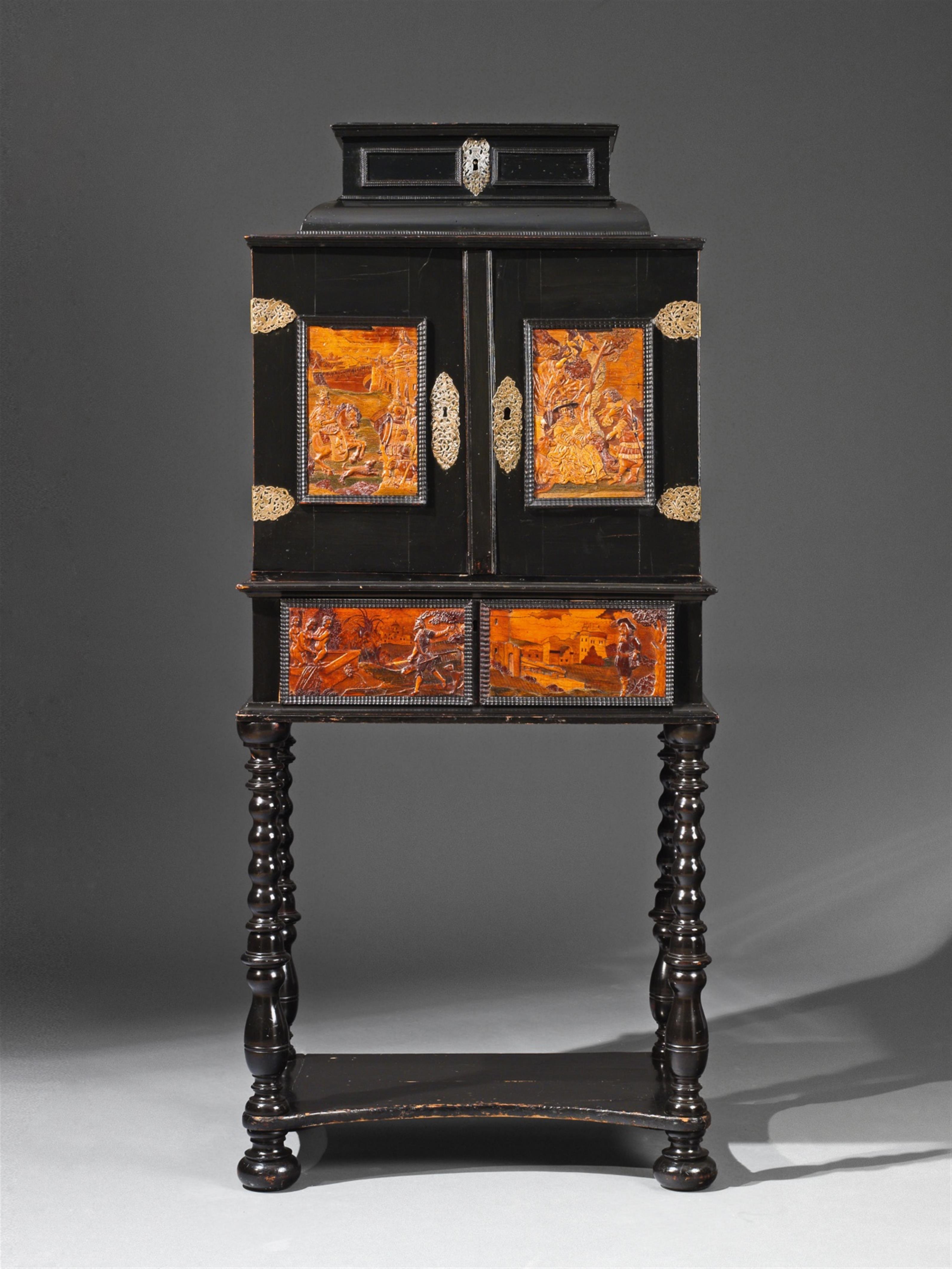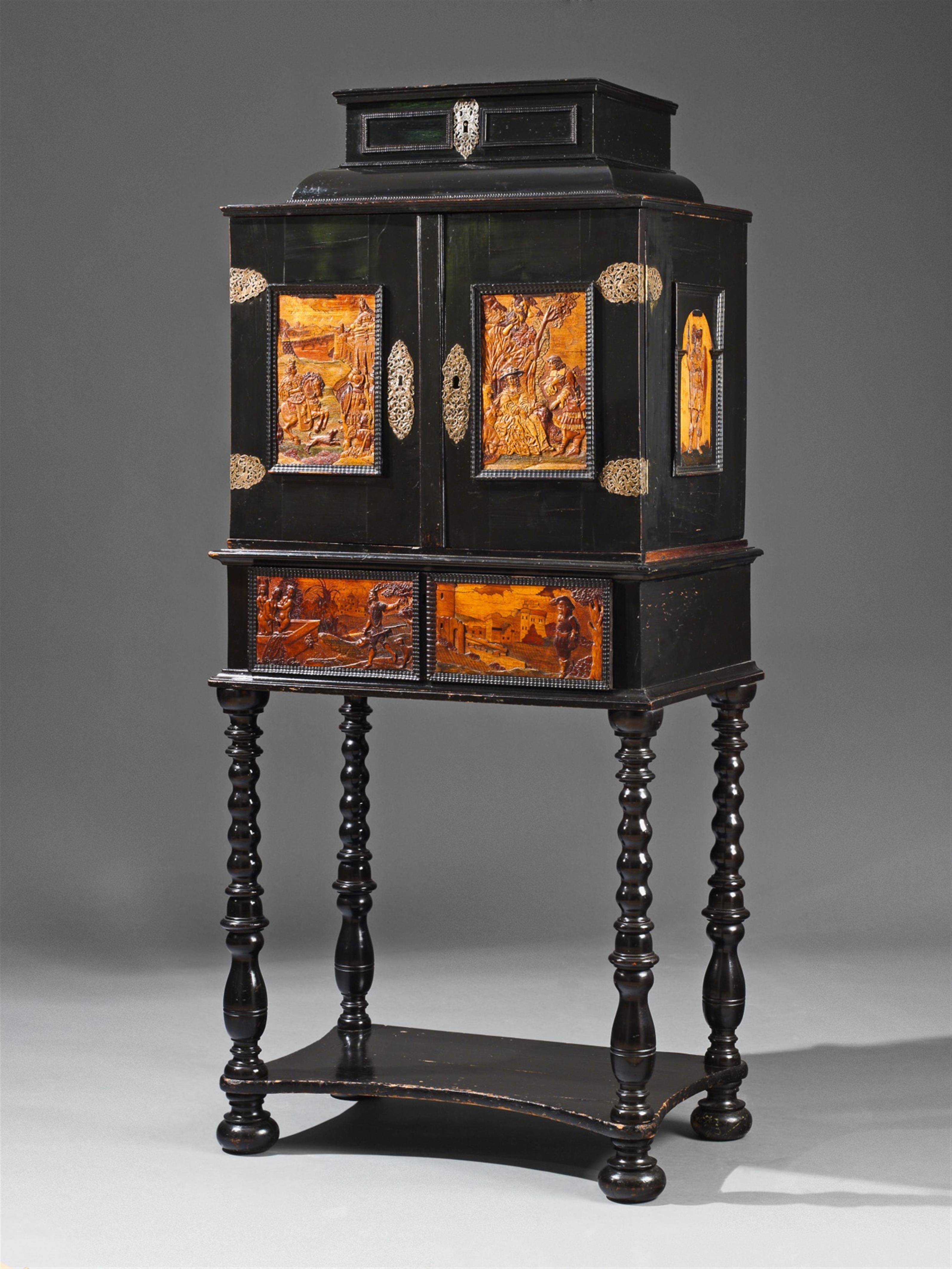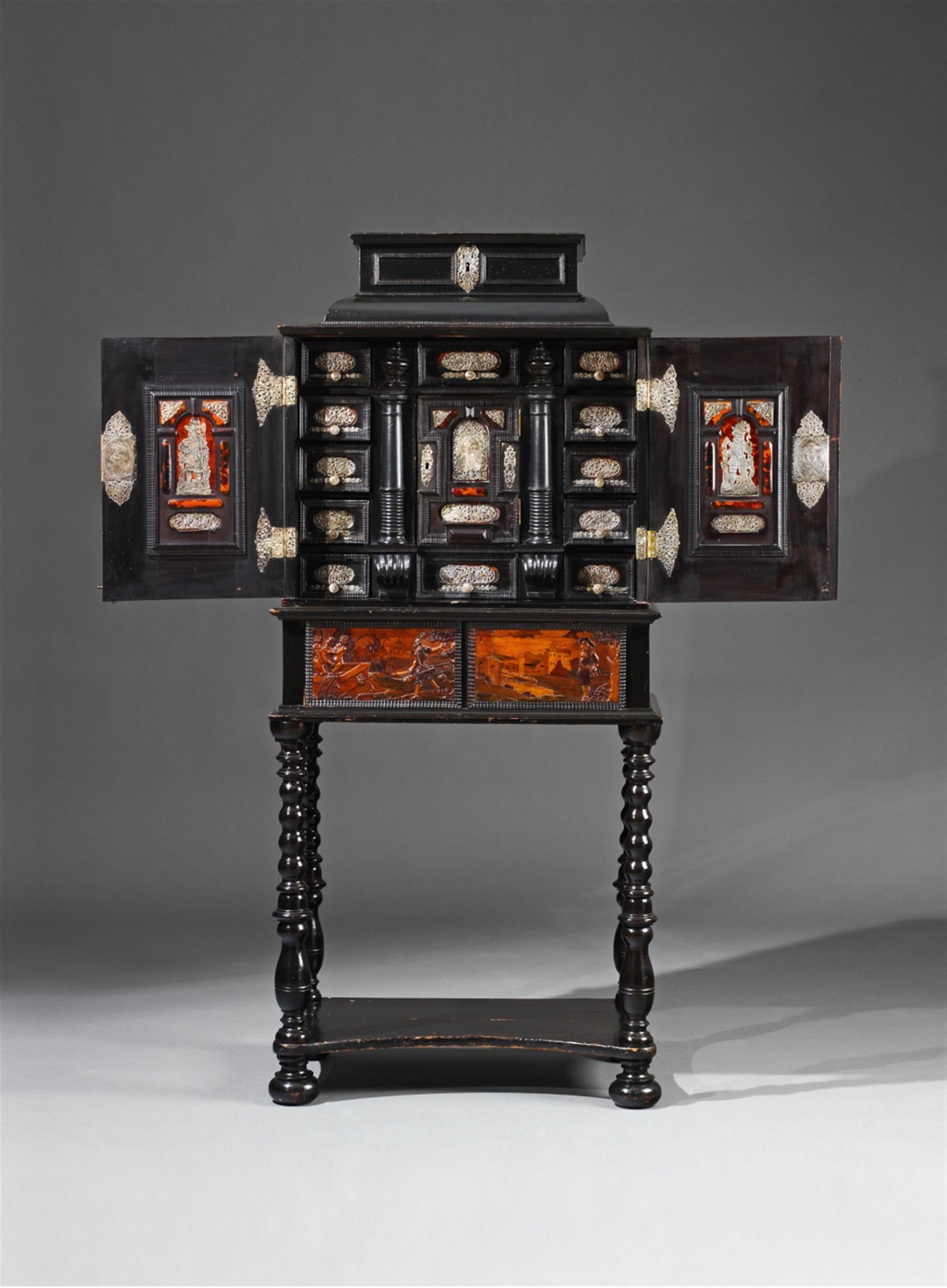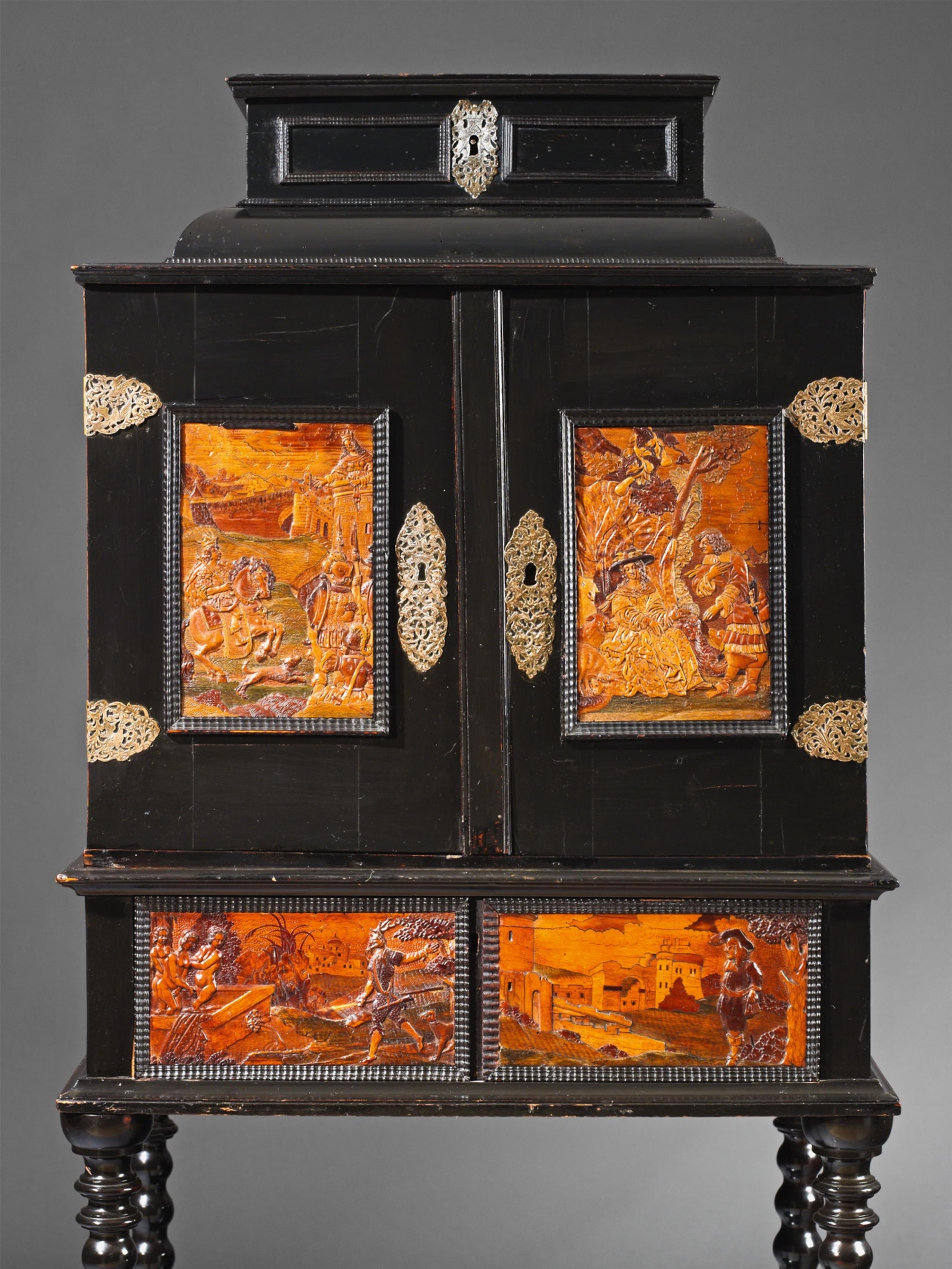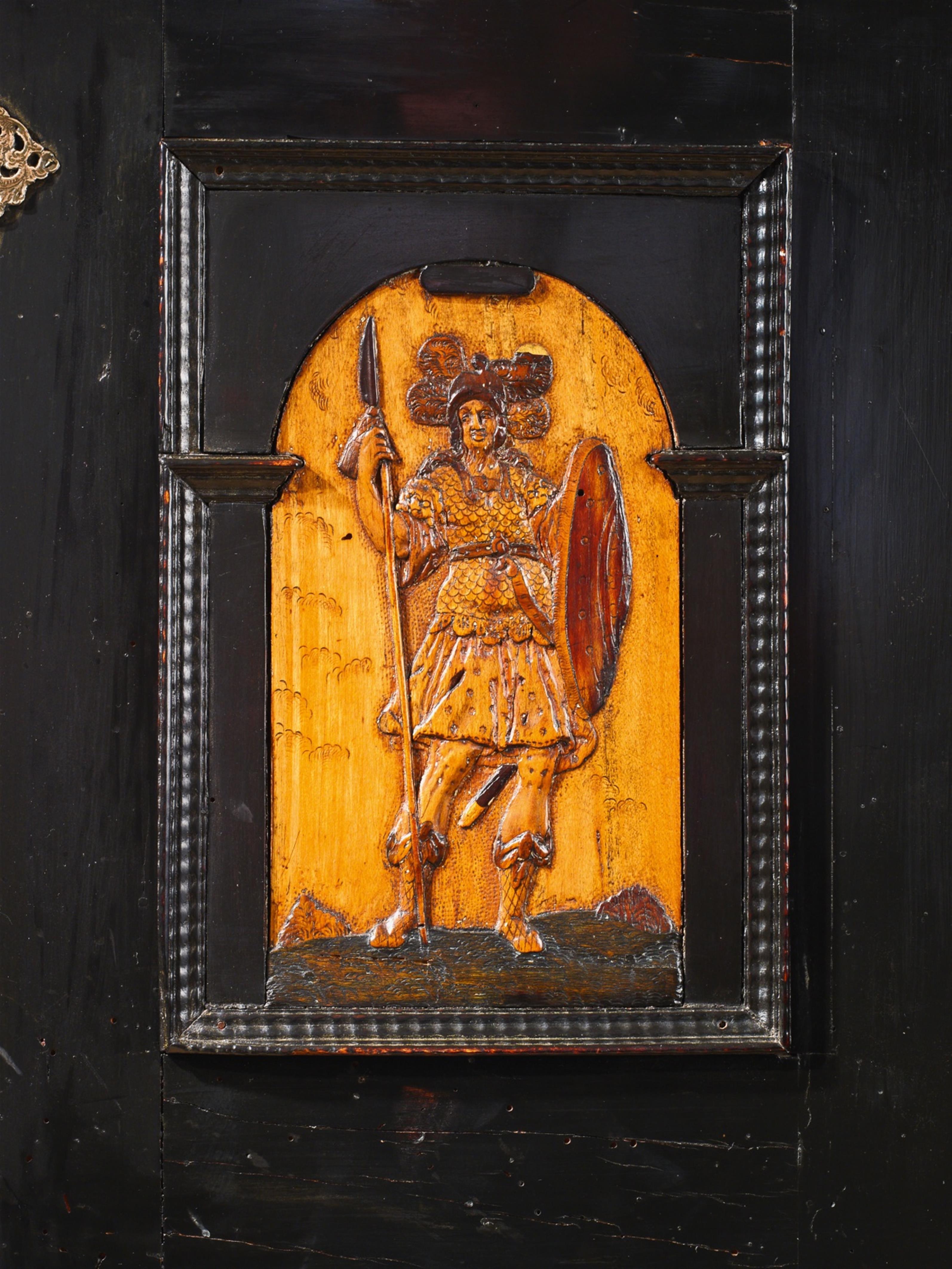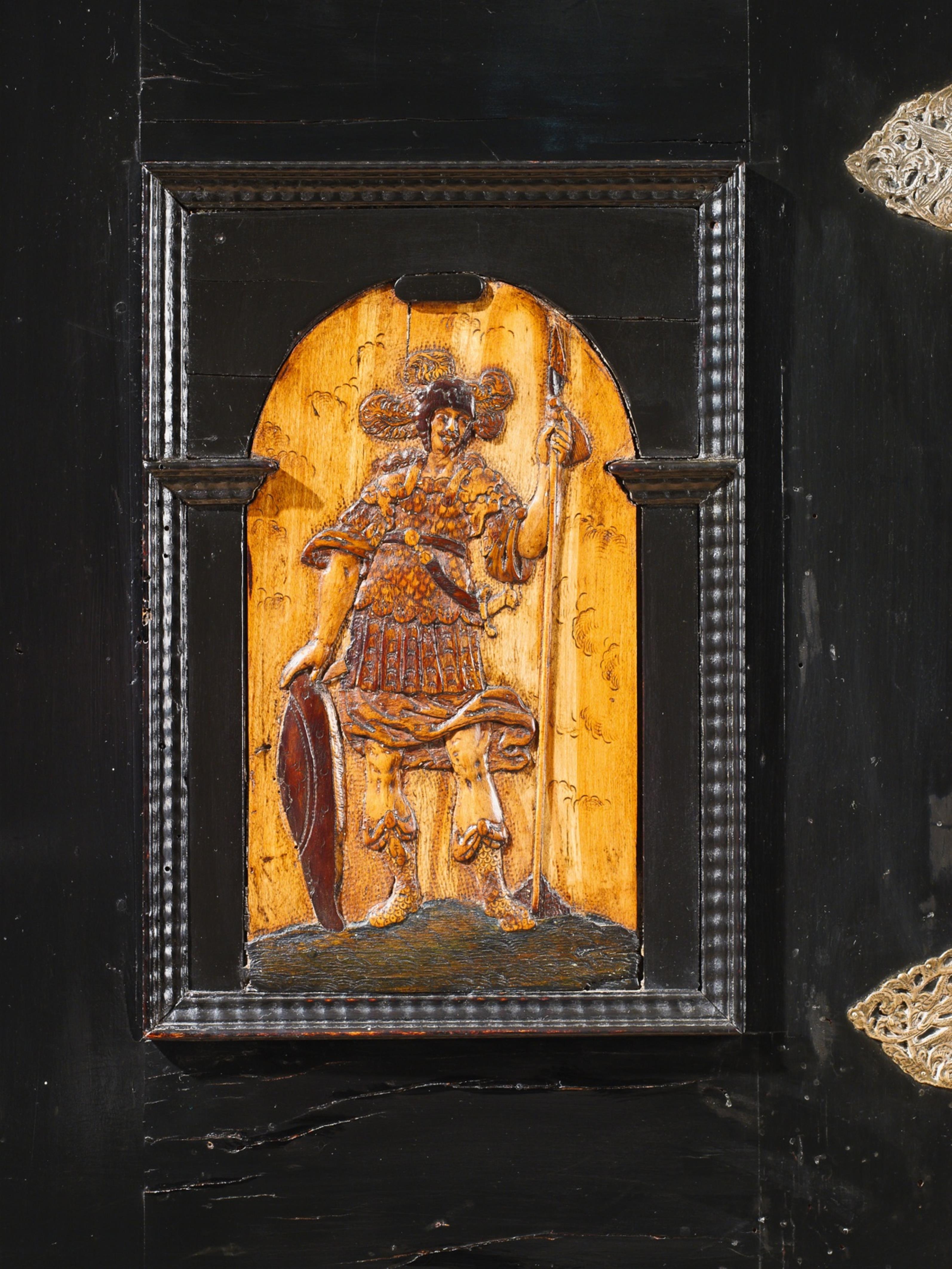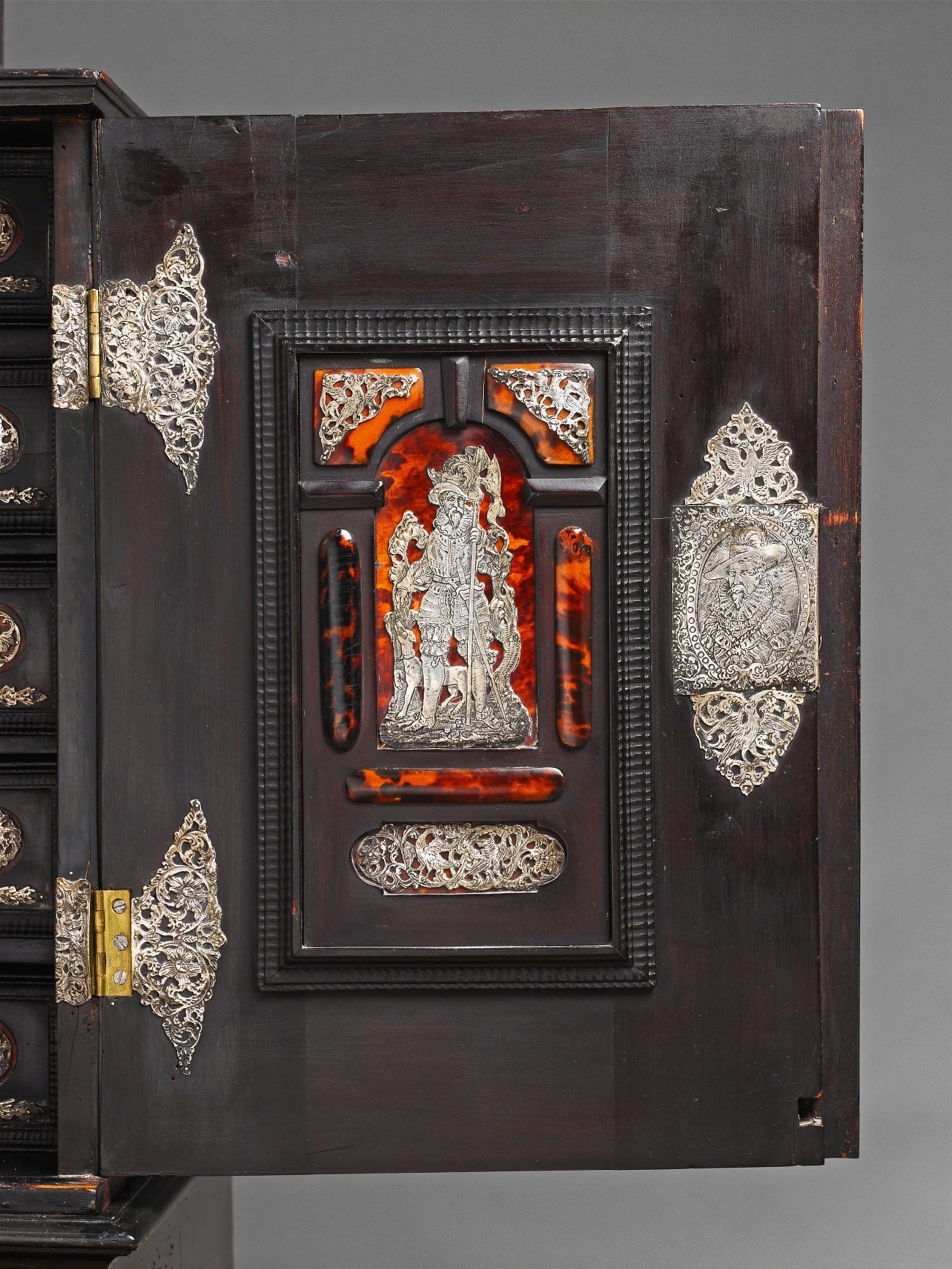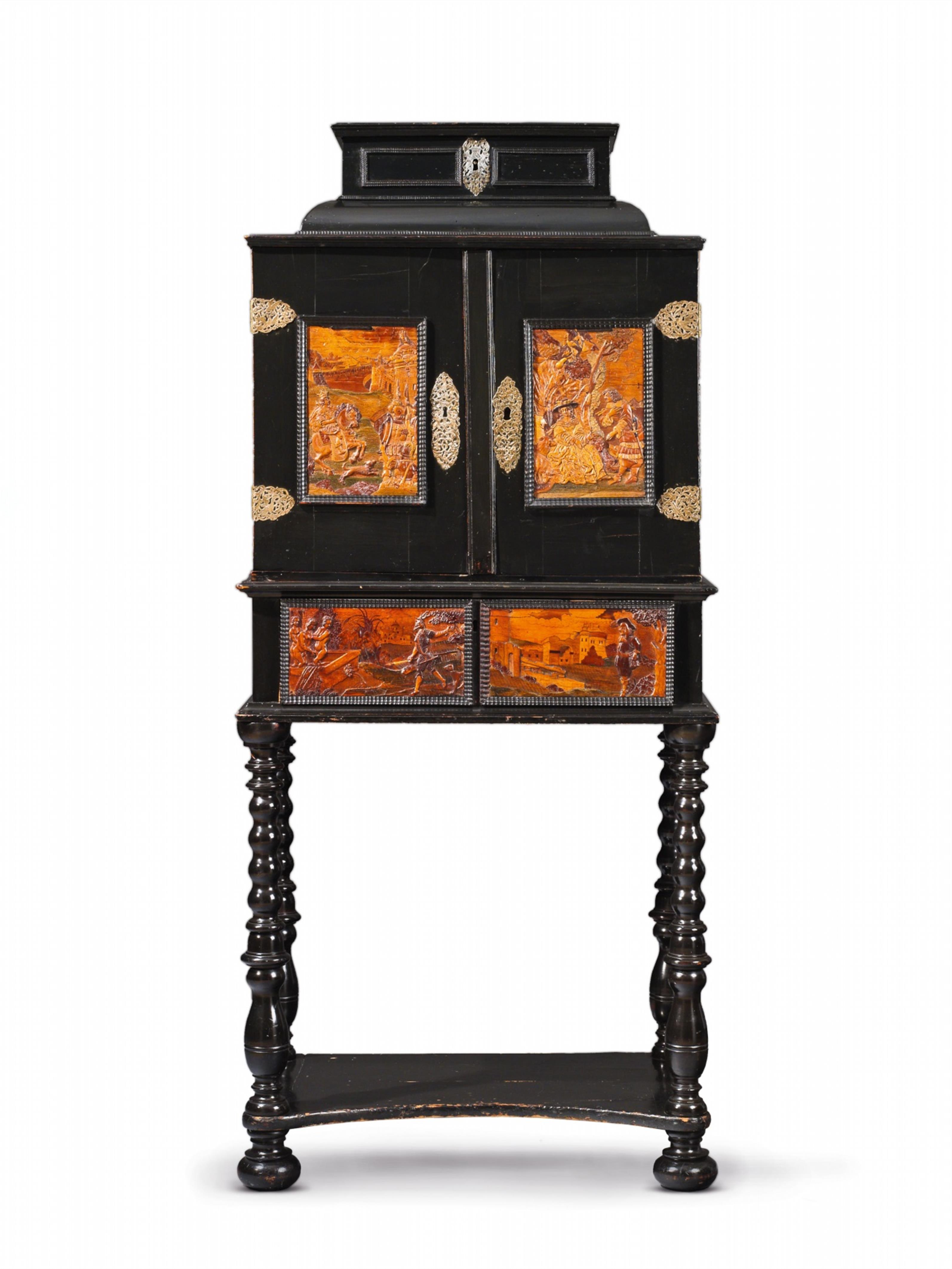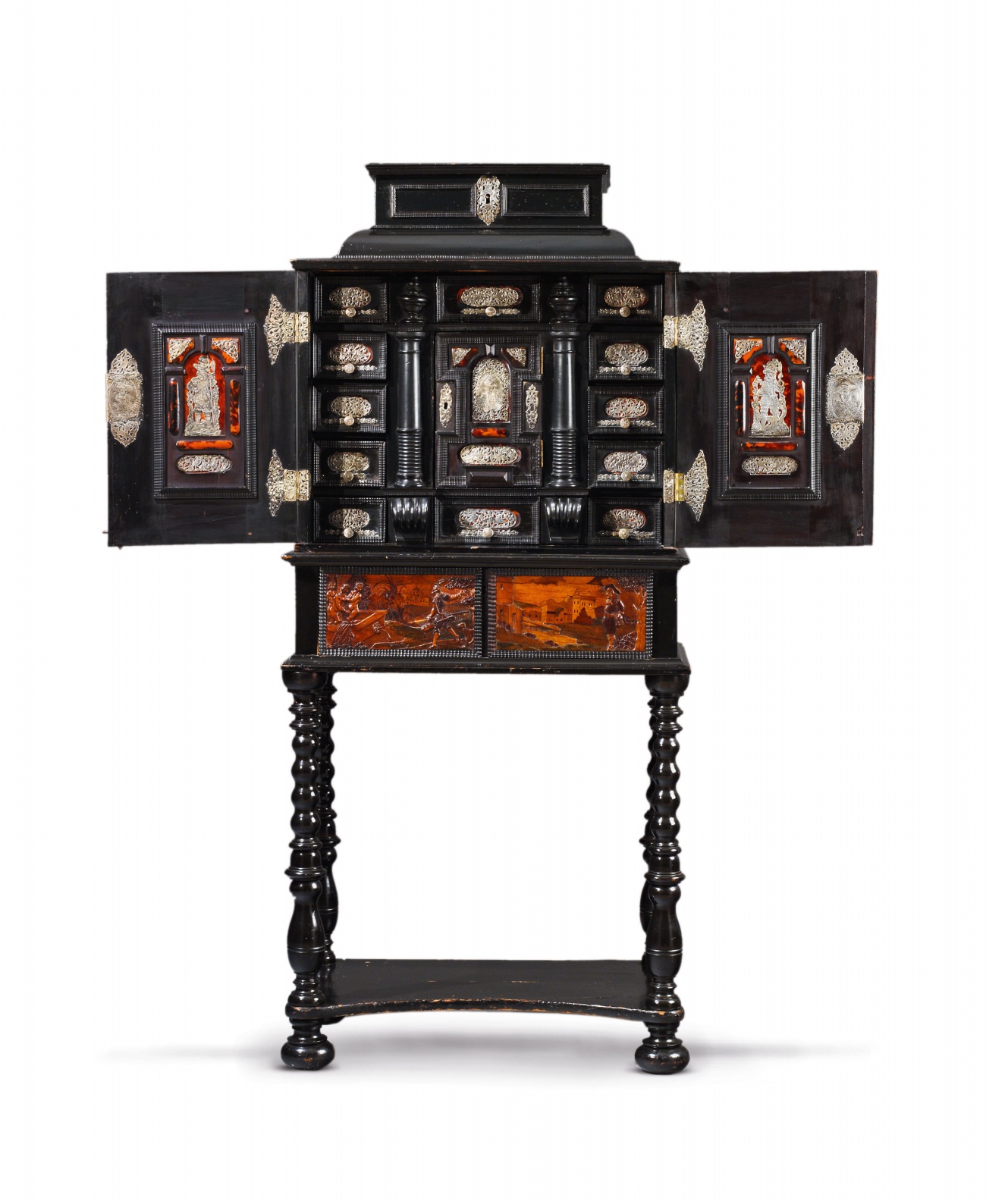An inlaid Bohemian Eger cabinet
With various woods and tortoiseshell decor, openwork silver mountings. A deux corps, the cabinet resting on a table with two drawers. The doors decorated with relief marquetry depictions of a king approaching a besieged city and Sylvia and Coridon, the drawers with Diana and Actaeon and a landscape. The sides with depictions of an ancient warrior (possibly Mars). The interior containing 11 drawers surrounding a central compartment flanked by pillars. The varnish redone, minor losses, shrinkage cracks. H 148, W 66.2, D 42.4 cm.
Last quarter 17th C., the table later.
This type of cabinet with multiple doors developed in the 16th century when humanist scholars began to amass collections of rare and valuable objects. These collections, which were to become the curiosity cabinets of the Renaissance, required new forms of furniture. These pieces were designed to allow their aristocratic owners to transport their collections and to display them in an appropriately representative manner to visitors and friends. Thus, the portable, multiple drawered cabinet was born. The complicated closing mechanisms, secret compartments and intricate décor of such pieces often set high demands on the cabinetmaker's art. The demand for such pieces in the 17th century grew even further after the presentation of the so-called pommerschen kunstschrank. Objets de vertu became status symbols and collecting became a fashion.
The Eger cabinets with relief inlays became an easily recognisable type and were produced in a similar form for a period of over 100 years. They were mainly produced by the Eck, Fischer and Haberstumpf families, who perfected and developed this technique in their workshops over generations. It was Adam Eck who revived this inlay technique, which was already recorded in use in Northern Italy in the 15th century, and popularised it in the early 17th century.
Literature
Cf. for the composition of this piece, cf.: Voigt, Reliefintarsien aus Eger, Halle an der Saale, 1999, cat. no. I.13, p. 264, illus. p. 153.

